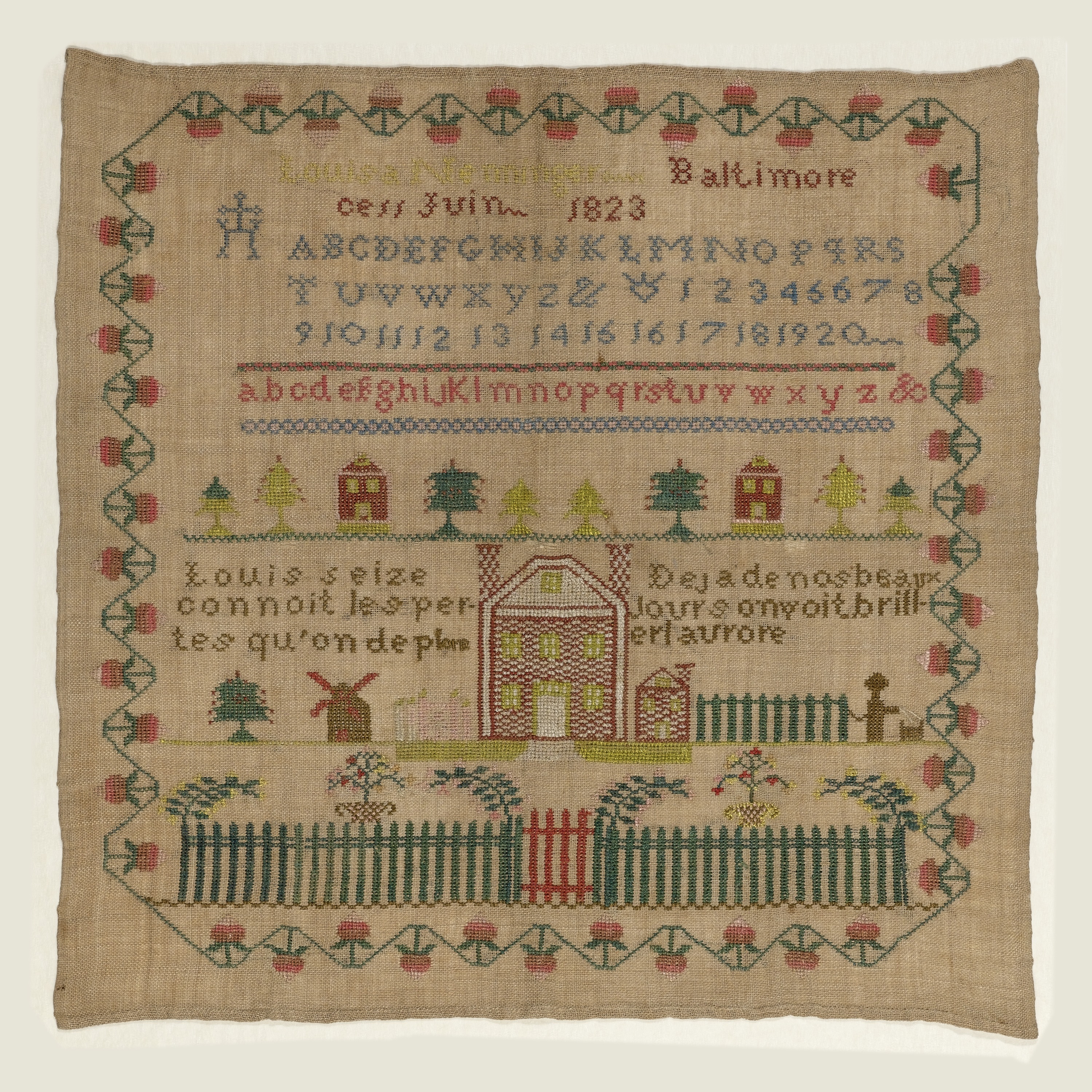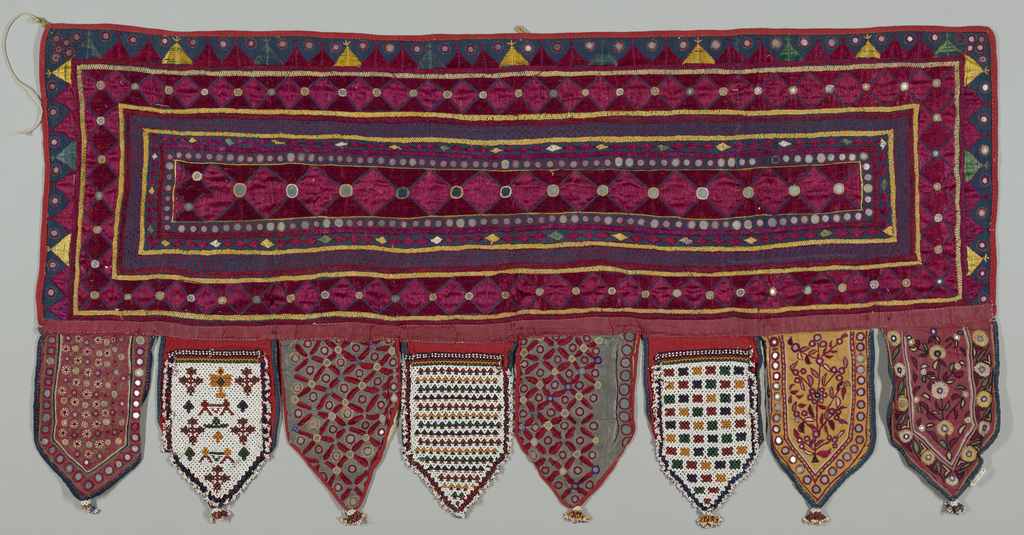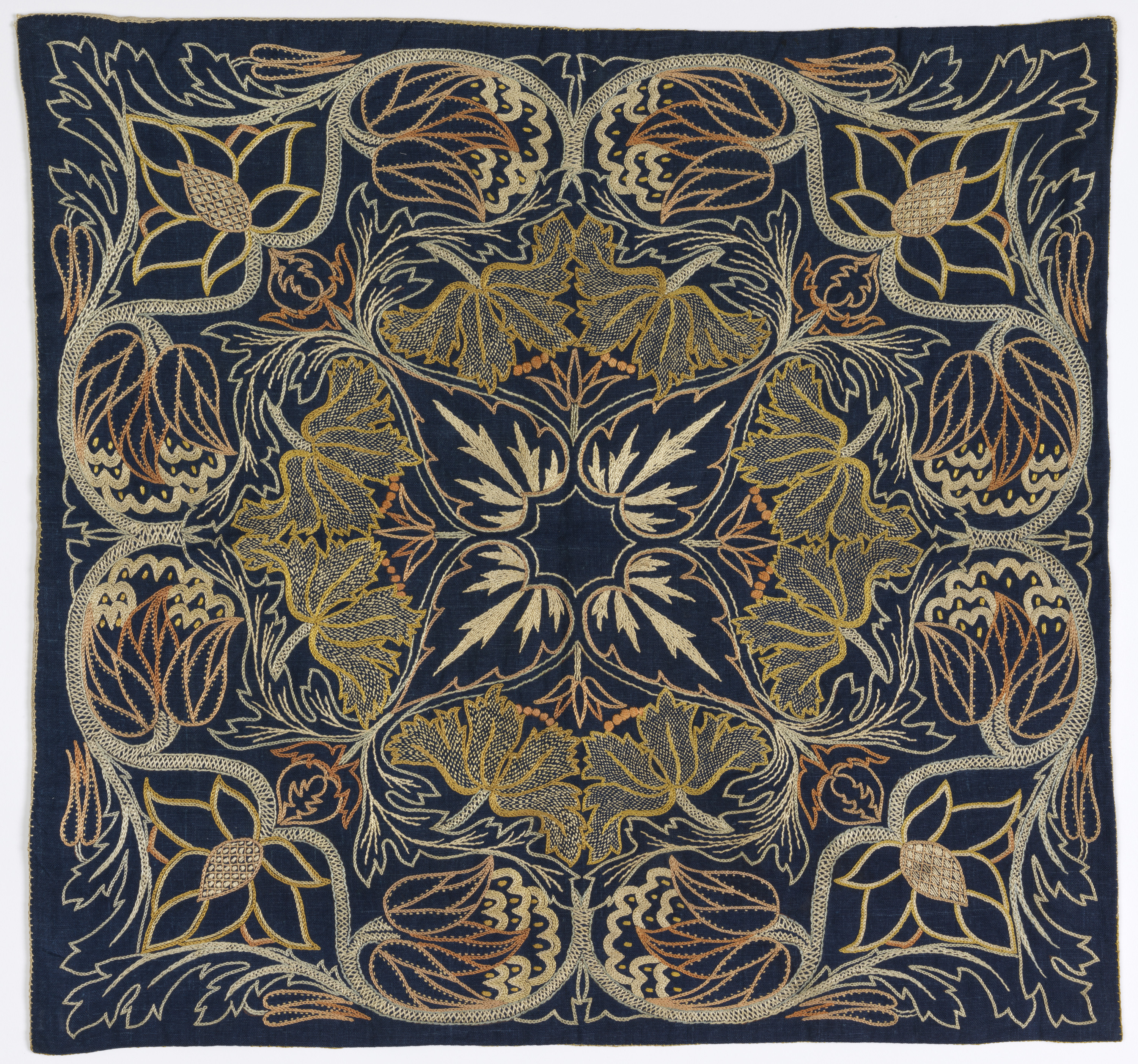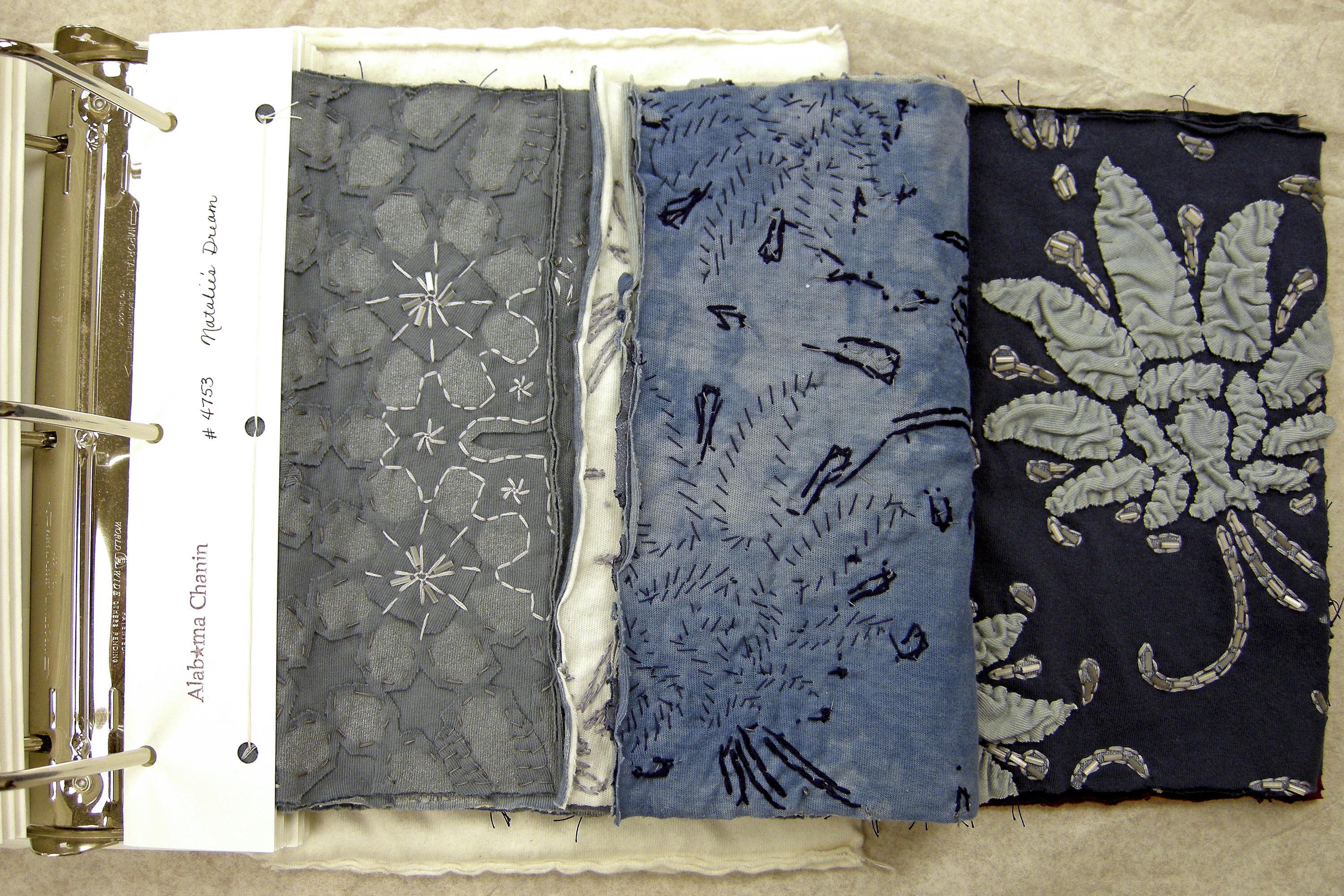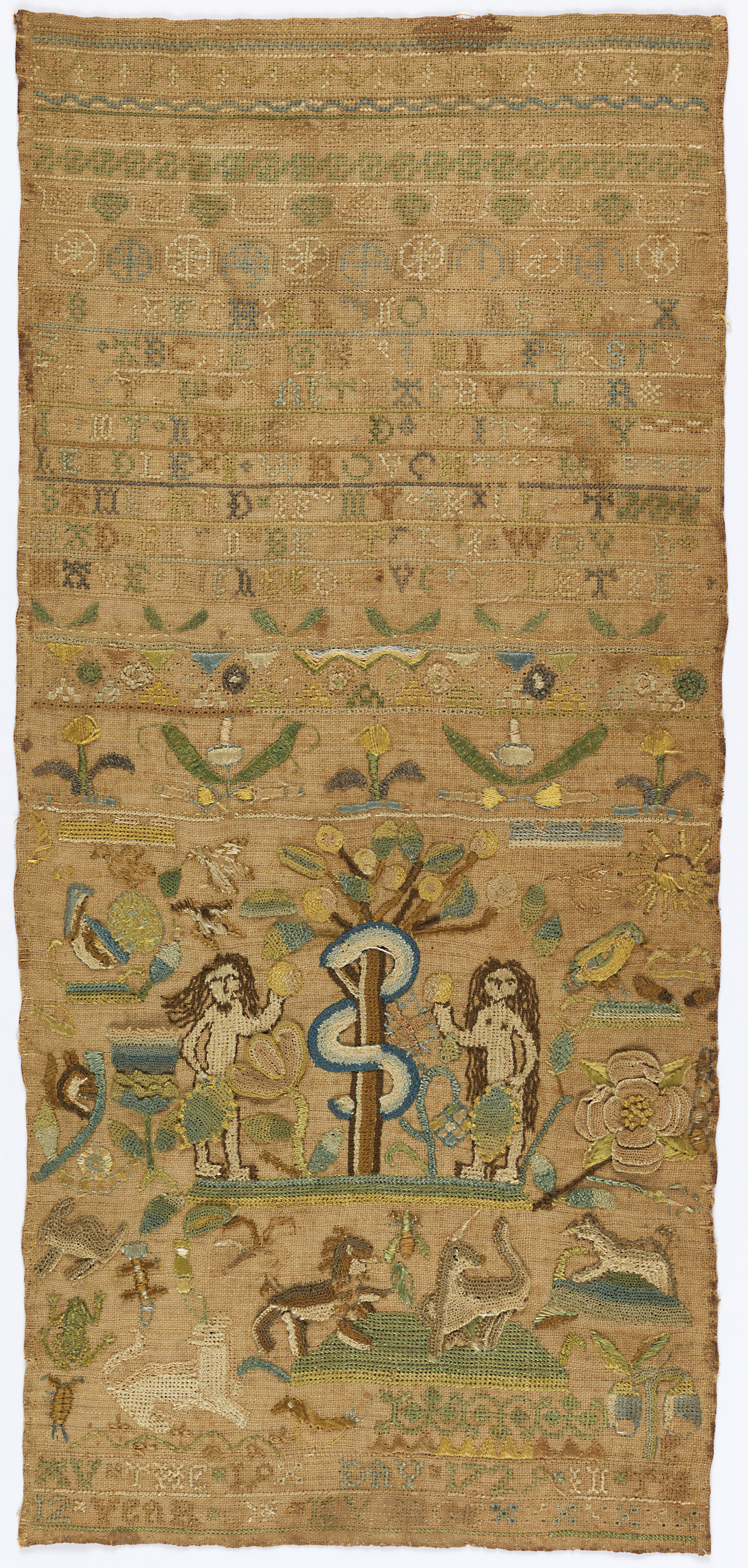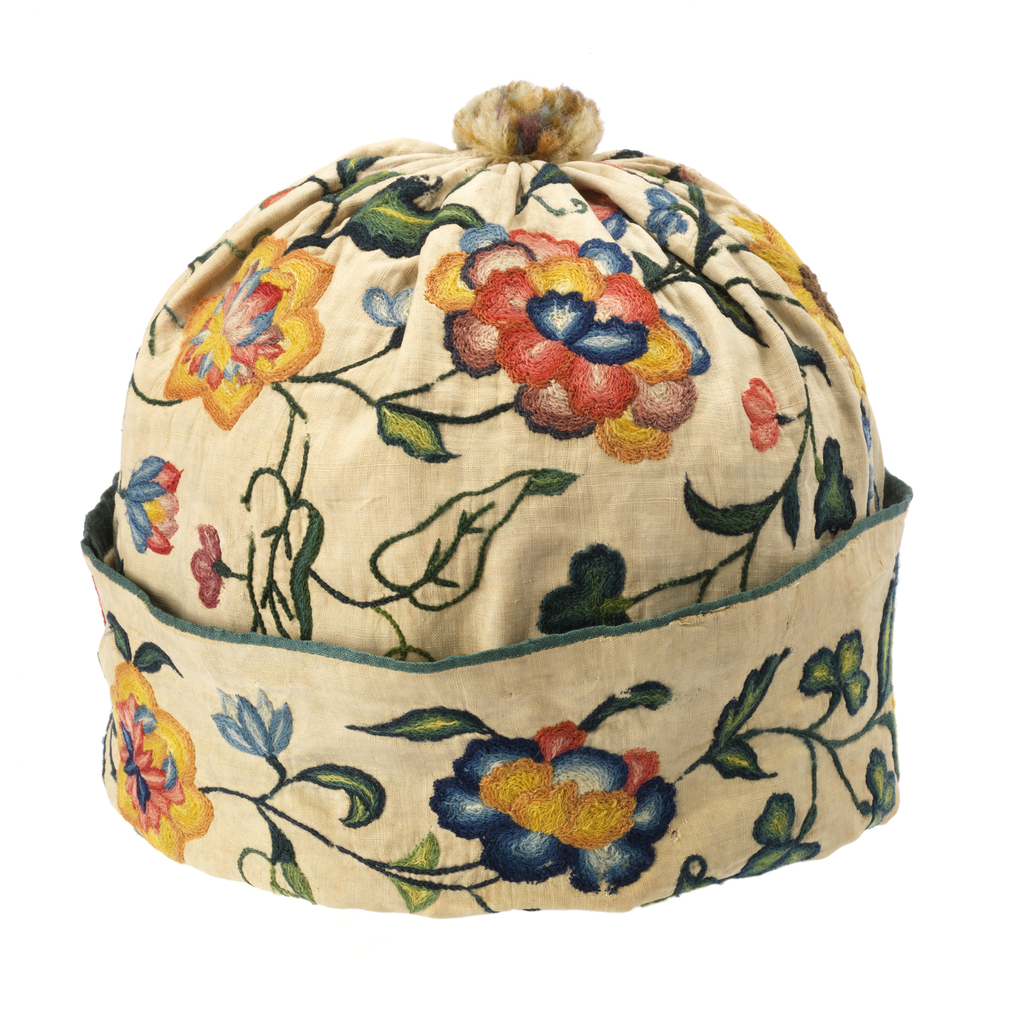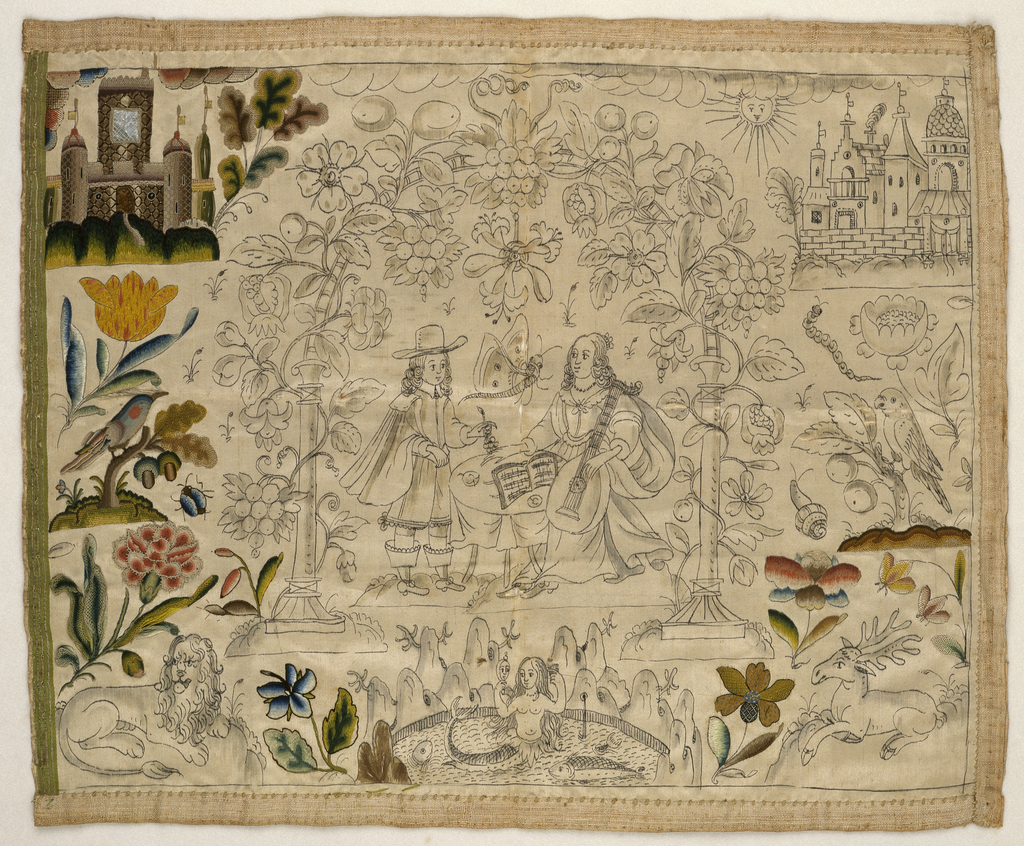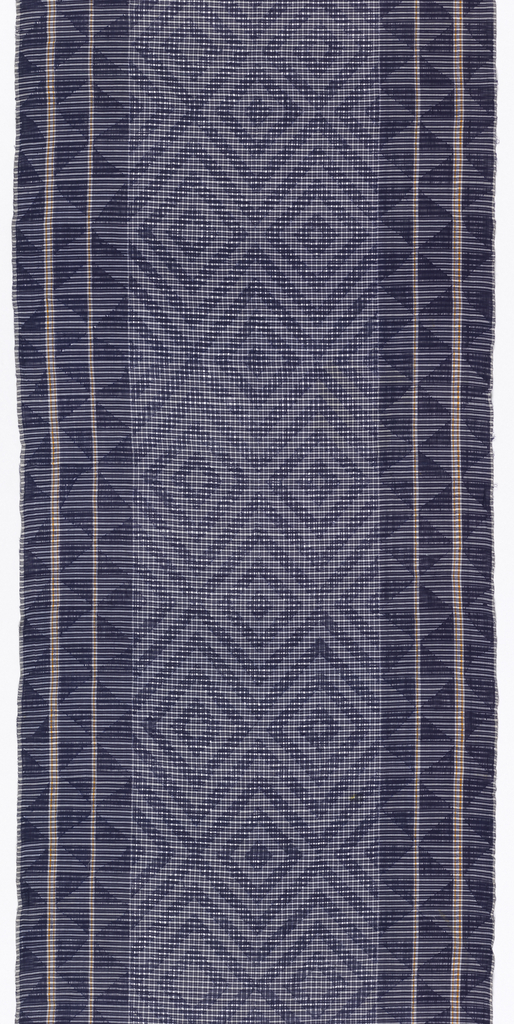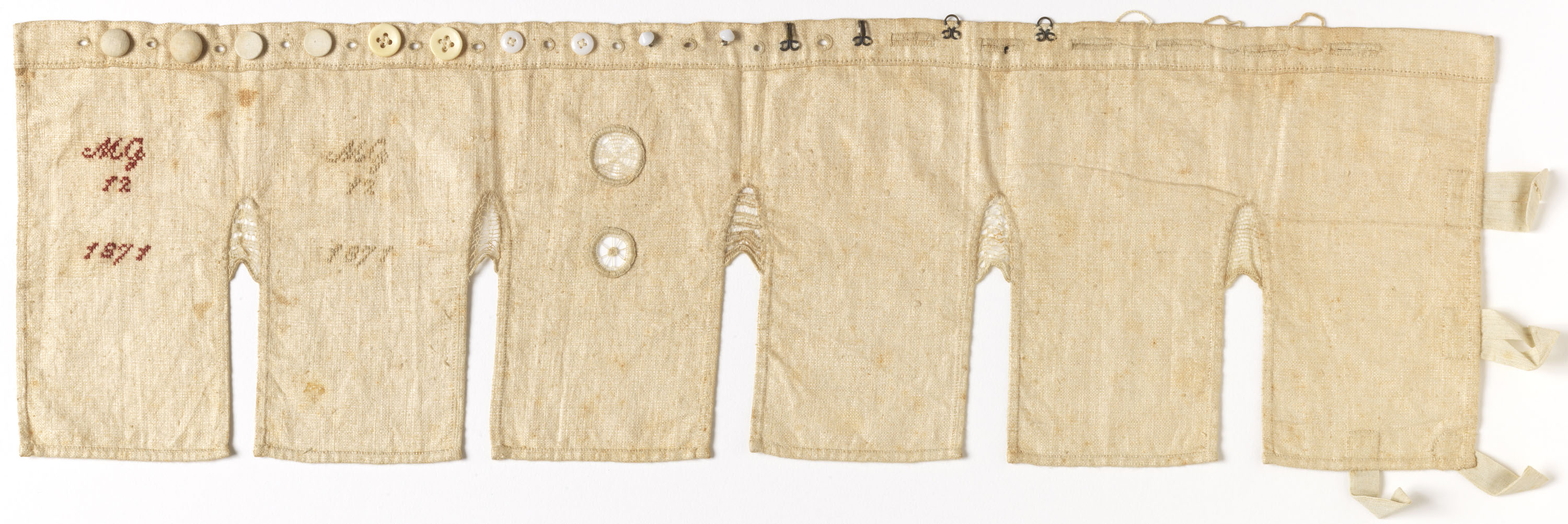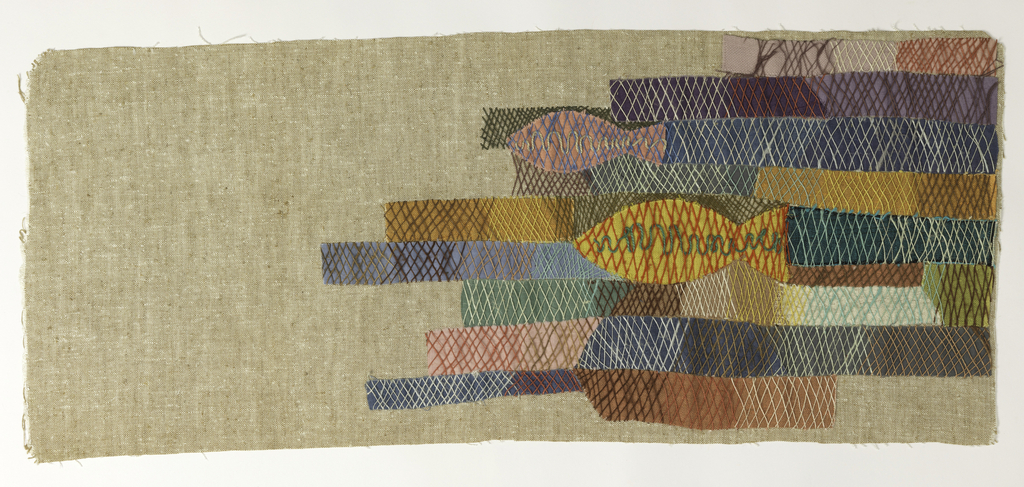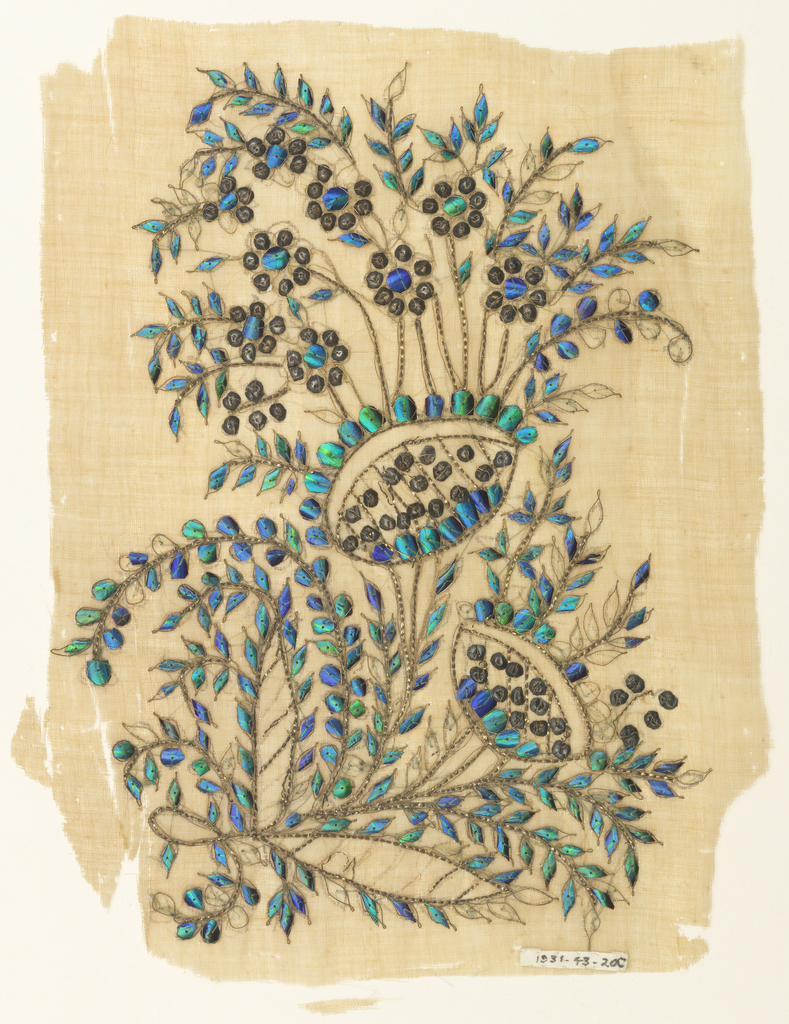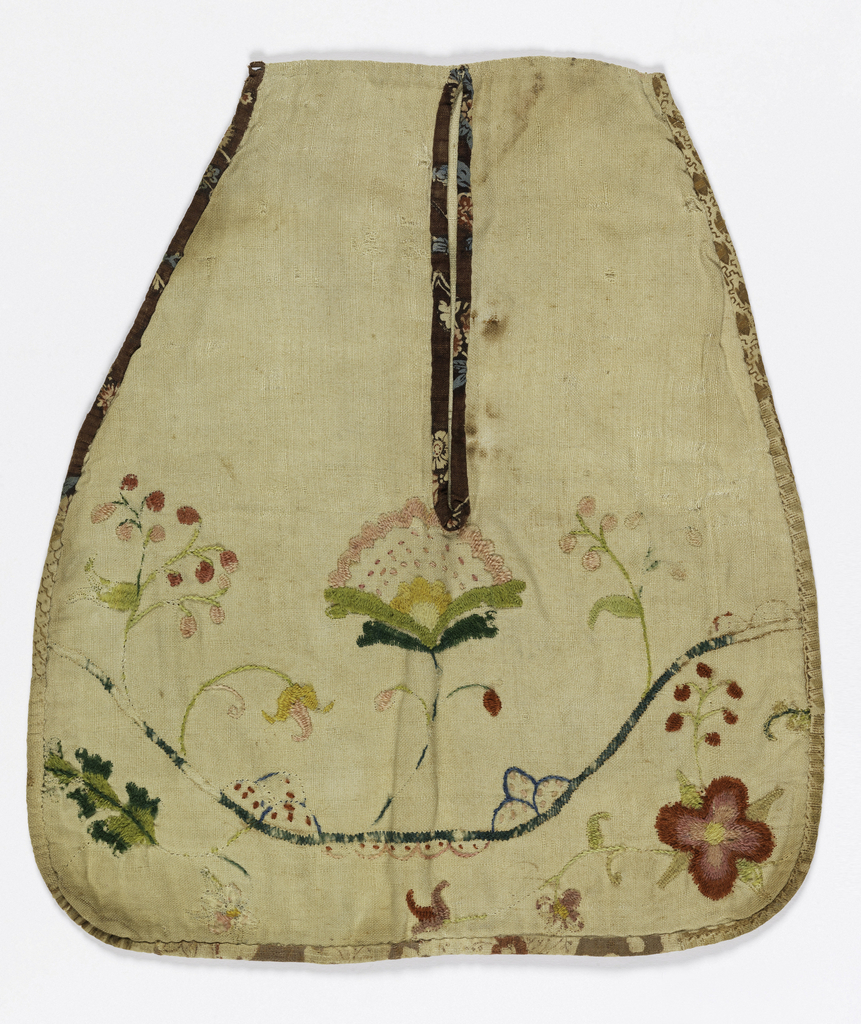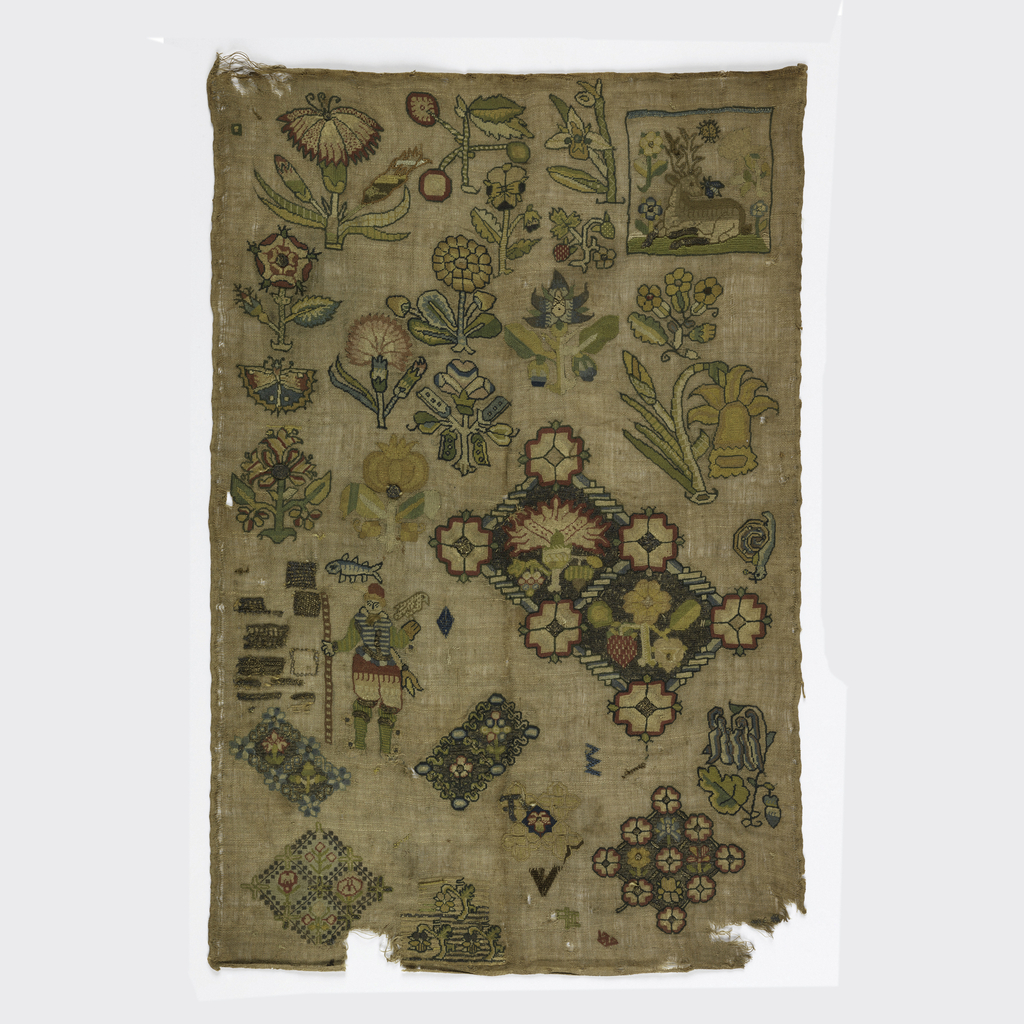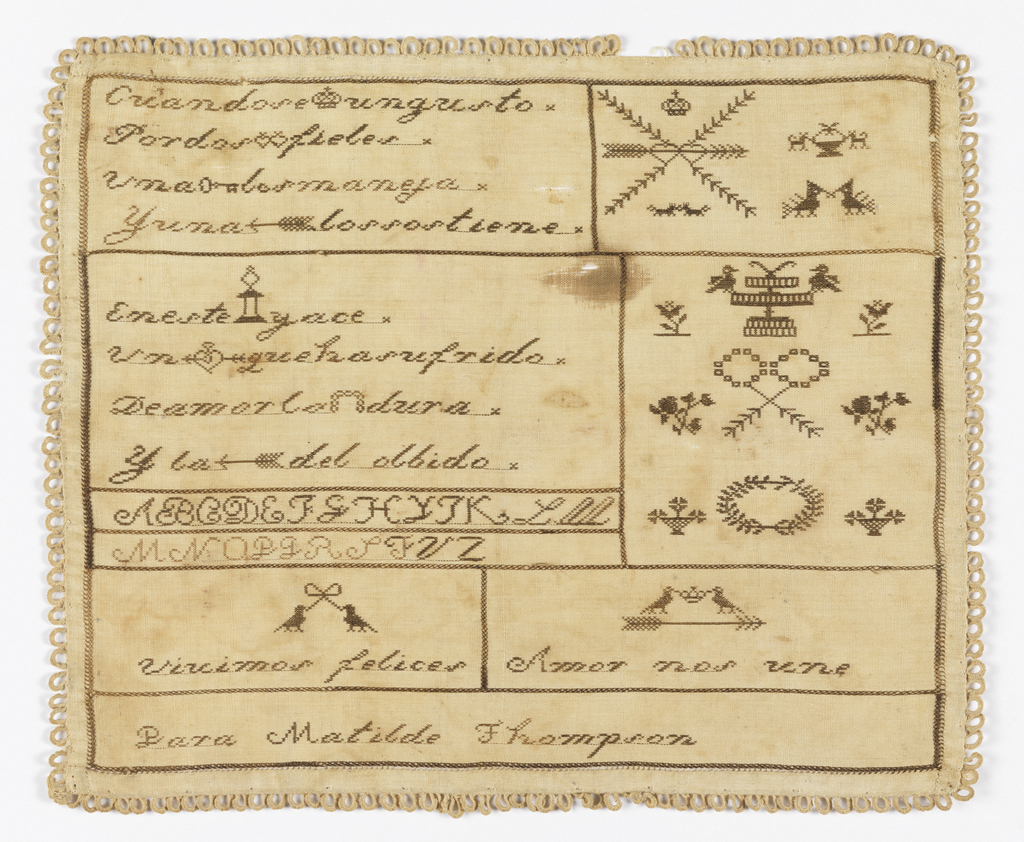French-speaking Catholics, fleeing the bloody revolutions in France and the Caribbean, settled in large numbers in the Baltimore area. In 1791, priests from the Parisian Society of Saint Suplice established a seminary in west Baltimore conducting religious services in French, and it soon became the center of a rapidly-growing French community. Among the émigrés, both...
Heidrun Schimmel says that she has always been interested in the connection between fiber/fabric/textile and the human being, especially between the thread and the human. Perhaps a metaphor for human existence, stitching with thread tracks time, especially when employing the same type of stitch on the same type of cloth as Schimmel has been doing...
The toran is a frieze hanging named after a sacred gateway in Hindu, Jain, and Buddhist architecture. In the Gujarati communities of western India, a toran is hung above the doorway to the main room of the house as a sign of welcoming. This particular toran appears to be in the Kathipa style, recognizable by...
May Morris will forever be in the shadow of her famous father William Morris, the chief protagonist of the English Arts and Crafts movement, and of her mother, the Pre-Raphaelite beauty Jane Burden. Yet she was an accomplished artist in her own right, a fact evidenced by the skillful design and craftsmanship of this cushion...
After a decade of working as a designer and stylist in Europe, Natalie Chanin traveled to her hometown of Lovelace Crossroads, Alabama, to film a documentary, Stitch, about the southern quilting tradition. Ads placed in local newspapers brought in hundreds of stitchers, some formerly employed in Alabama’s once-thriving textile industry. Chanin created the fashion and...
Martha Butler’s 1729 sampler belongs to the earliest known group of Boston samplers, worked between 1724 and 1744. The style of the samplers evolved over time, but the majority of them feature Adam and Eve or the Garden of Eden, both important symbols of Puritan theology. Martha’s sampler is closely related to what is believed...
This nightcap, dating from the late 17th or early 18th century, was made using a technique called crewel, a type of embroidery worked with wool yarn on linen. Since men had shaved heads or very short hair to accommodate their wigs during this period, they wore caps like this one to keep warm after their...
In the 17th century, amateur embroiderers or their teachers could commission custom designs from pattern drawers. In Thomas Heywood’s 1607 play, “The Faire Maide of the Exchange,” a character known as the ‘Drawer’ takes detailed instruction for a handkerchief: In one corner of the same, place wanton love, Drawing his bow shooting an amorous dart,...
The island group occupied by the Kalabari people is located in the Niger River delta. This strategic position brought them into contact with traders and travelers from many African and non-African cultures over a period of centuries. Their dress traditions are marked by an eclectic and cosmopolitan combination of cultural references. [1] Kalabari cut-thread cloth...
Decorative embroidered samplers were made by daughters of the well-to-do for display in their homes, and were symbols of gentility as much as of skill. For daughters of the poor, instruction in needlework, while equally important, often had a more practical purpose: to prepare them for work as domestic servants. Going into service for a...
“It’s not how you do a stitch, it’s what you do with it” was Mariska Karasz’s exhortation to would-be embroiderers. Serving as guest needlework editor for House Beautiful magazine from 1951–53, the artist wrote needlework lessons with suggestions for adding unique decorative embroidery to bedding, table linens and curtains. But her instruction was never prescriptive;...
From the archives, an Object of the Day post on an example of iridescent design from the collection.
Before the mid-19th century, pockets were not sewn into women’s clothing, but were an accessory. Pockets, usually worn in pairs, were tied around the waist between a woman’s under-petticoat and her petticoat or skirt. Openings in the side seams of these voluminous skirts provided a discreet way for her to access their contents. Pockets were...
This spot sampler is one of a genre of 17th century samplers that truly embodied the name. Most samplers of the period had a structure, pleasant in appearance, which incorporated pattern bands, phrases, and information about the maker such as her name and the date she completed the work. However, spot samplers like this one...
a sampler might say “noli timere” be not afraid. but this sampler says “love unites us” in the end, we are all alone. but somewhere we also learn the elusive truth that there is love. love of life and beauty, knowledge and kindness. love unites us is not a bad thing to read on...
